When I started working at Buffer, there was a phrase I heard often when discussing projects and ideas: “Let me reflect on that.”
It’s a sentiment I had rarely heard at the previous tech companies I worked for, and it surprised me.
While moving fast and making quick decisions can be a very valuable approach, I have learned from Buffer that it’s also great to make the space to pause and reflect.
At the 1-year anniversary of Buffer’s image-creation tool Pablo, it feels like a good time to reflect on the triumphs and challenges of our own “startup within a startup” and to process what we have learned.
(A quick note before we start: I have only had the pleasure of working on Pablo for a few months, so when I say “we,” I mean all the amazing people at Buffer who have been part of the Pablo story.)
Here’s the inside story of building Pablo over the past year, and what it feels like to create a “startup within a startup.”
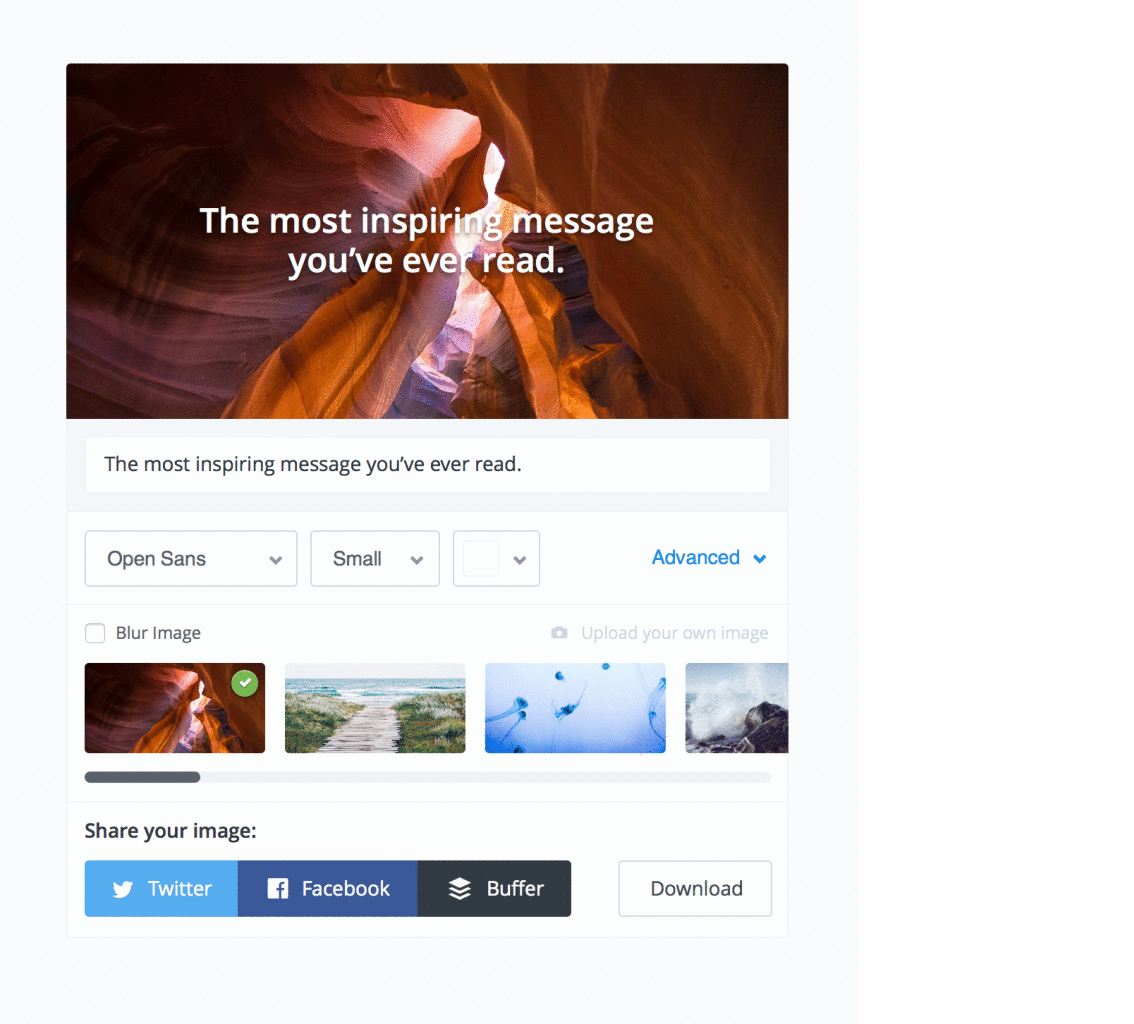
January 2015: “Engaging images” project begins
The idea for Pablo emerged from two distinct paths:
- Kevan, on our marketing team, happened to share some friction points he had with creating images for social media.
- At the same time, our Customer Development team was hearing that users were struggling to create engaging images for the content they were sharing through Buffer. Users recognized that if they included an image with their posts, they would see more engagement. However, this was a challenge to put into practice.
There are several great tools that help create images, but after reflecting on some of the pain points we had heard, it felt like we could build a solution internally that also integrated nicely with Buffer.
It quickly became clear that there was an opportunity.
Here’s the original description from the product spec dated Jan. 8, 2015. At this point, the project was known only as the “engaging images project.””
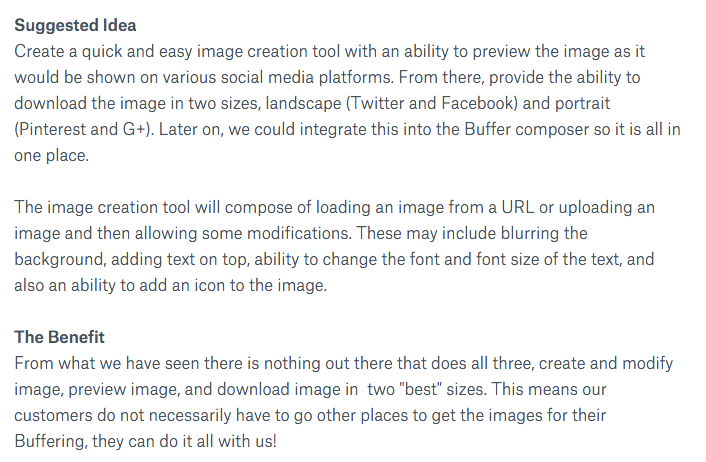
Lesson learned: From this time period we learned our first lesson: Solve your own problem.
February: Testing, validating and naming
After defining what needed to be validated, the team got to work on a minimum viable product. It took about a month to build and was heavily focused on creating images quickly. There were only a few features and a strong emphasis on quotes.
Here’s an early prototype:

Our emerging tool now needed a name! Here’s a bit of the conversation around choosing “Pablo” as the tool’s title.
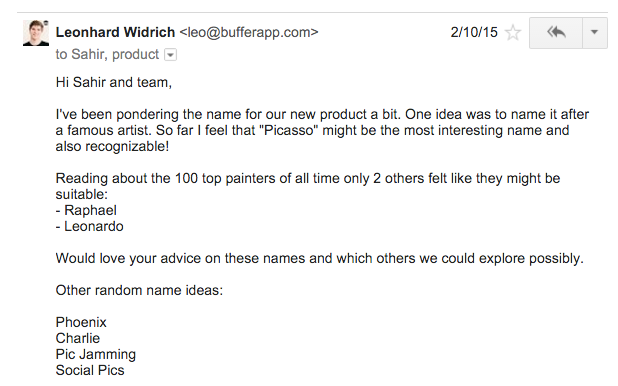
And the email from which Pablo was born:
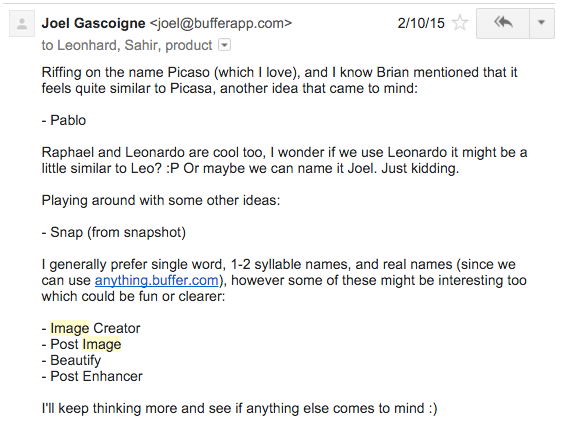
We quietly launched our new tool to a small group of users in mid-February, with the unofficial tagline of “create engaging social images in 30 seconds.” Here’s a look at some last bits of internal testing before sharing it!
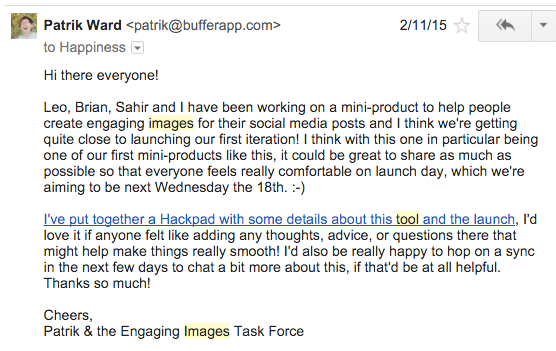
The goal with the first version of Pablo was to validate the hypotheses that came from the initial customer interviews: We believe that Buffer users experience trouble creating engaging images when sharing to Twitter.
So it felt like great validation late in the month when we got some promising results from the product-market fit survey we ran.
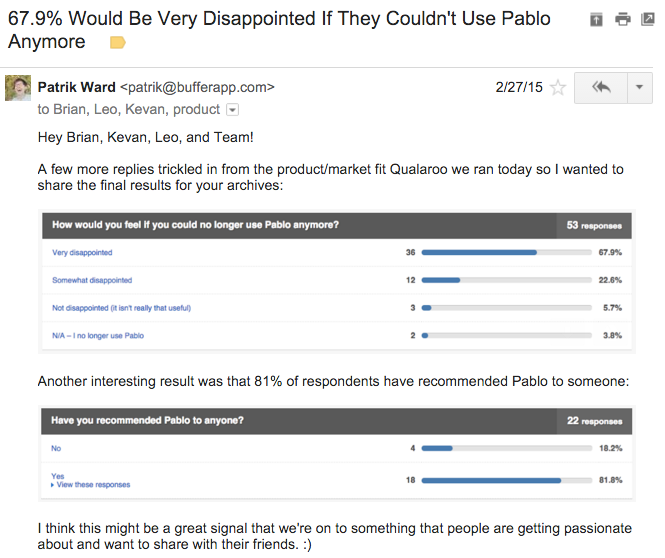
We still weren’t sure if we were solving the right problems or if we were solving them in the right way. There was a lot of work to do to figure out if we were on the right path.
And yet we got a lot of excitement from the amazing community at Product Hunt, who picked up on Pablo before we were even quite ready!
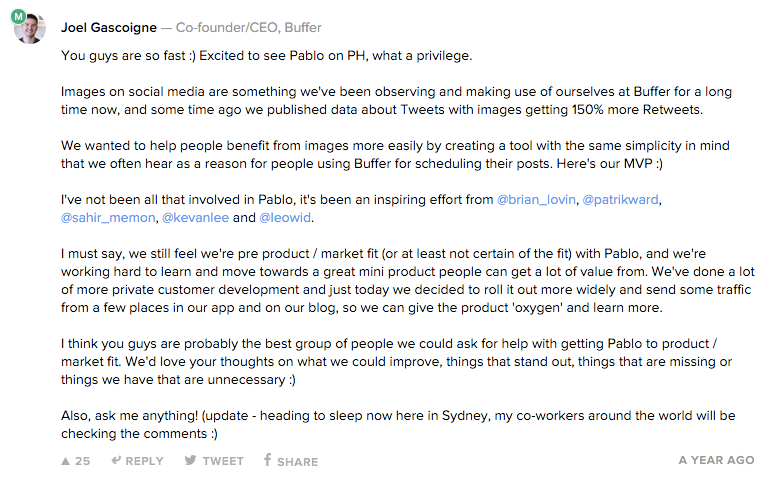
Lesson learned: Launch before you are ready.
March: Launching and learning
Finally in March we felt great about the first version of our little project and officially launched Pablo!
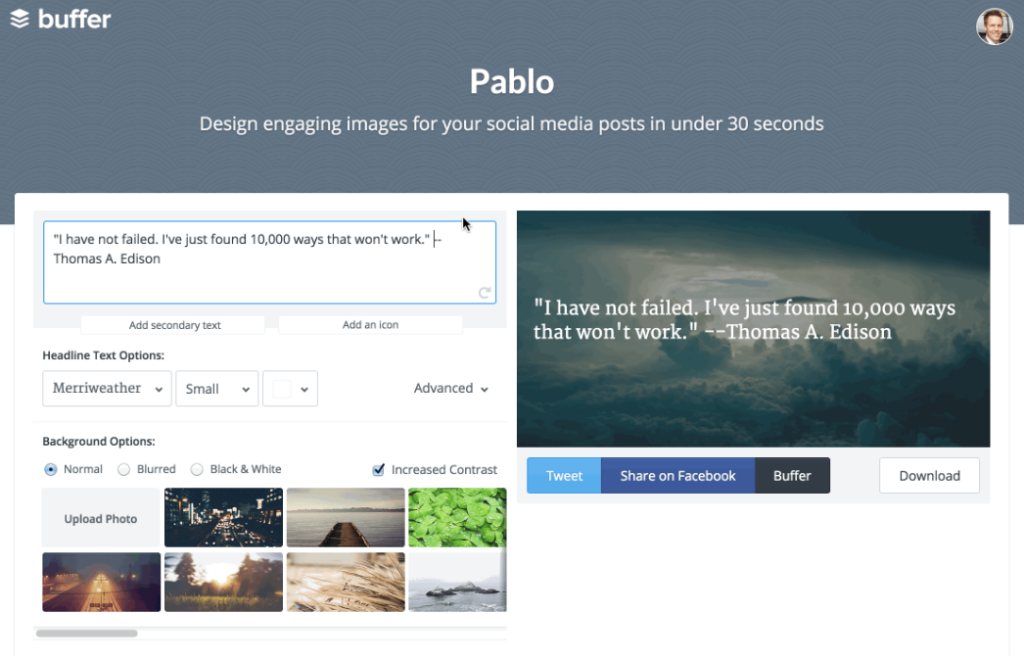
We got some great press and tons of great feedback, including a signal that we might want to explain the name a bit further:

With those great thoughts from Joel in mind, here are some of the “mascot” ideas we explored for Pablo:
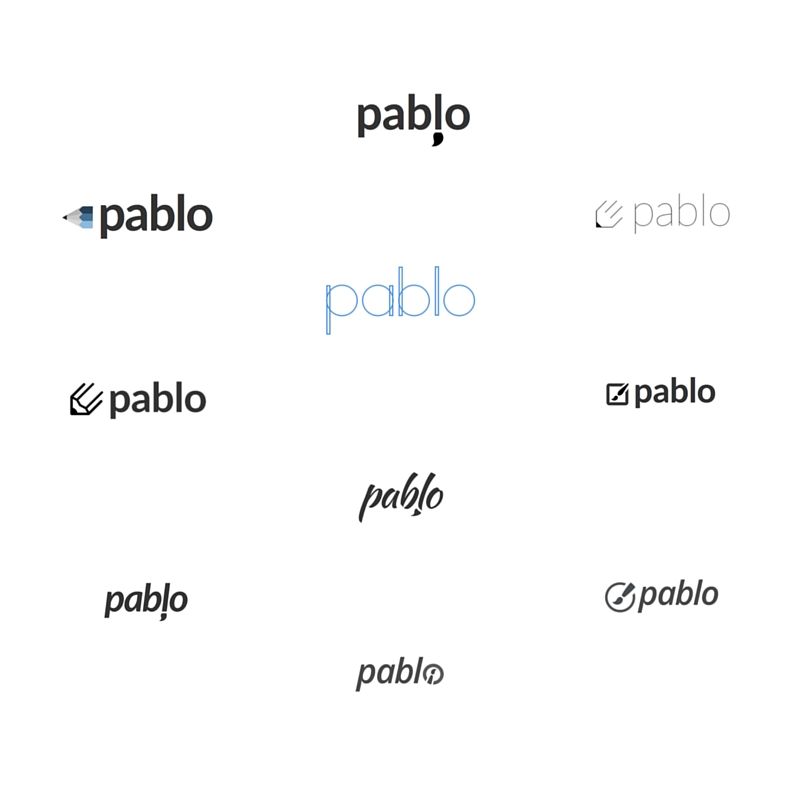
Before finally landing on the image you see on Pablo now:

Lesson learned: Remove any barriers in the way of your customer getting the hang of your product.
The quiet summer
A lot of new entrepreneurs fall into the trap of thinking that if you build a product, users will naturally discover it and start using it.
It’s even easier to fall into this trap when you are lucky enough to work on a new product within a company that is already growing quickly and has a thriving community.
The Buffer community is extremely supportive and this was very clear during the launch of Pablo. However, it quickly became clear that growth needs to be intentional.
Not long after the launch of Pablo, there were some changes that caused us to put less focus on Pablo in comparison to Buffer. We were experimenting with self-management and also focusing on building an integration with Pinterest.
This led to Pablo being set to the side a bit—and as you can see from the data, if you are not focusing on growth, it will not happen on its own.

Lesson learned: Just because you build it, doesn’t mean they will come.
Fall: Determining the future of Pablo
After launching Buffer for Pinterest and learning some valuable lessons from exploring self-management, it felt like it was time to figure out what was next for Pablo.
During these conversations, there were some critical questions that came up:
- Is this a business or a side-project?
- Do we even need the Pablo name or should we just integrate it into Buffer?
- What is the market opportunity for Pablo?
To be honest, we are still wrestling with some of these questions and don’t have clear answers yet.
However, we knew we wanted to learn quickly. We decided to focus on what we could do immediately to move Pablo forward and continue to provide value to our users.
After several customer interviews, these were our action items:
- Make Pablo a good Pin creator. We had just introduced Pinterest within Buffer, and this felt like a great tie-in.
- Make it easier to import images and text into Pablo. People were going out of their way to share interesting snippets of text from other sites, and images serve mostly to call attention to their text.
- Keep Pablo separate from Buffer for now. The need for quick social media images extends beyond the Buffer community, and we had data showing that lots of non-Buffer users were finding value with it.
Lesson learned: To keep a project moving forward, focus on what you can do right now.
October: Pablo 2.0 Launch
Based on these learnings, we got to work on creating Pablo 2.0, and launched it in October 2015.
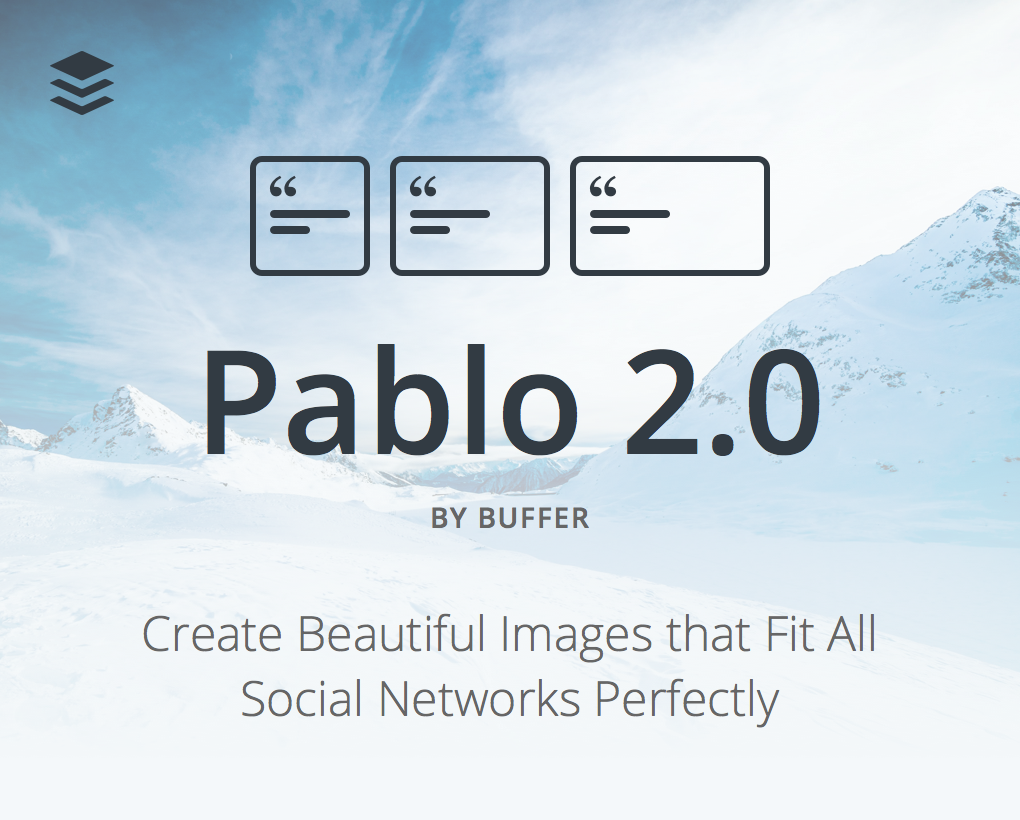
The goal with this iteration was to make Pablo feel more like an app, as opposed to a super-powered page.
This led to a cleaner UI and several new features. However, the goal of empowering users to create engaging social images in 30 seconds had not changed.
The launch of Pablo 2.0 was a success, and we saw a new spike in usage.
However, after the excitement had settled, the usage numbers dropped back down. The interesting thing was that we had new baseline that was a clear step up from before.
We tried this again with an even smaller improvement—upgrades to the Pablo extension—and shared it with the Buffer community. There was again an initial spike and then a drop to a new baseline.
We were gaining more users from the Buffer community with each iteration. There was a clear cycle, and the goal became to get through those cycles as quickly as possible.
Lesson learned: Early growth often feels like stair steps.
Early 2016: Fine-tuning and product-market fit
After launching Pablo 2.0 and creating a product area for Pablo, there was still a critical question that we needed to answer: Does Pablo have product-market fit?
We have measured product-market fit a few times using the survey that Sean Ellis created—most recently just a few weeks ago.
Each time the results showed that 67-70% of users would be “very disappointed” if they could not use Pablo anymore.

Based on Sean’s suggestion that you have product-market fit with anything over 40%, this is a fantastic result! We must be on the right path, right?
As we dove into the data, we found that usage of Pablo was sporadic and our retention was less than ideal. If people would be disappointed about not having Pablo , then why aren’t they using it more often?
One hypothesis that we have is that we are not addressing enough use cases with Pablo. Pablo does a few things very well and people love it for that. However, we have ambitious goals for Pablo and will need to continue to address more pain points for users in order to drive regular usage and continue to grow.
We want to continue to learn from power users of Pablo and figure out how to make it part of their weekly workflow.
Lesson learned: Product-market fit does not always correlate to retention.
The future of Pablo
We have learned a lot over the last year with Pablo and will continue to iterate on the product—and iterate on the team.
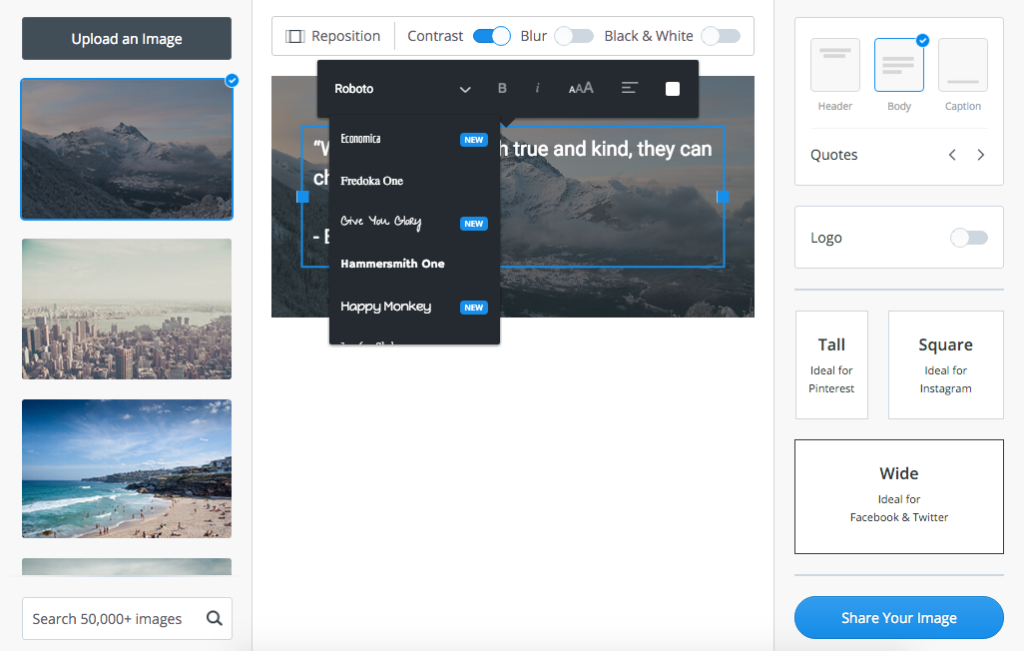
As a company grows and more people join, jobs start to become more specialized. We now have marketing, customer support, data and several other types of experts that provide incredible advice on each topic.
As a startup within a startup, it feels like this would be a huge benefit that other startups don’t have. But more resources can also cause you to move slower.
When you only have a small team working on the project, each person wears many hats as more of a generalist.
- You don’t reach out to your marketing team to help with the latest blog post or email; you do it yourself.
- You don’t have hours to spend analyzing data and instead look at a few KPIs.
- You see every bug and flaw with your product because you are the one answering all of your support requests.
This might not always scale as a company grows, but it can be critical for the early the days.
What this means for Pablo is that we have reduce the team working on it to three people who will operate as generalists. We are also replicating the startup environment by using other members of Buffer as advisors, while the day-to-day activities are done by the core team.
Lesson learned: Early stage startups often need generalists.
Over to you
Even as a startup within a growing startup, I’ve learned w are not immune to the lessons that many veteran entrepreneurs have been writing about for years.
We have made a lot of mistakes and will make many more. Our goal is to learn every day and continue to improve. There are some exciting things coming for Pablo and in a year from now, I hope we can celebrate Pablo’s second birthday with several new lessons.
I’d love the chance to hear about lessons you’ve learned while launching a product or growing a business. And if you have thoughts on how we can improve Pablo, I’m all ears. Share with us in the comments!
Try Buffer for free
190,000+ creators, small businesses, and marketers use Buffer to grow their audiences every month.


